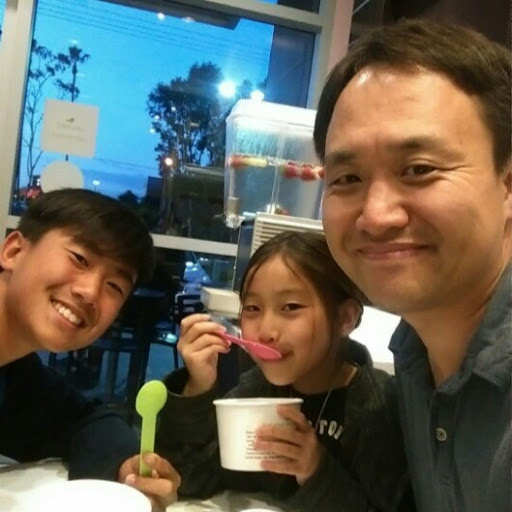Hoon Min Kim
age ~44
from Redwood City, CA
- Also known as:
-
- Hoon M Kim
- Min Kim Hoon
- Min Hoon Kim
- Honn M Kim
- Kim M Hoon
- Kim Mhoon
- Kim Minhoon
Hoon Kim Phones & Addresses
- Redwood City, CA
- Rancho Palos Verdes, CA
- Palo Alto, CA
- 308 108Th Ave NE, Bellevue, WA 98004 • 4254554120
- 11030 Main St, Bellevue, WA 98004 • 4254554120
- Van Nuys, CA
- Los Angeles, CA
- Philadelphia, PA
- Rch Palos Vrd, CA
Name / Title
Company / Classification
Phones & Addresses
Attorney
Choikim&parkllp
Legal Services
Legal Services
3435Wilshireblvd., Los Angeles, CA 90010
Manager
Golden West Demolition
Wrecking and Demolition Work
Wrecking and Demolition Work
2520 W 8Th St Ste 205, Los Angeles, CA 90057
Doctor Of Medicine
Physician and Surgeon
Offices and Clinics of Doctors of Medicine
Offices and Clinics of Doctors of Medicine
900 Kiely Blvd # 10, Santa Clara, CA 95051
Executive
Banco Popular North America
National Commercial Banks
National Commercial Banks
3360 W Olympic Blvd, Los Angeles, CA 90019
Religious Leader
Full Gospel World Missions Inc
Religious Organizations
Religious Organizations
1638 Fern Ave, Torrance, CA 90503
Website: fgwm.com
Website: fgwm.com
President
Pb & Br Inc
2991 Mead Ave, Santa Clara, CA 95051
1311 Dentwood Dr, San Jose, CA 95118
1311 Dentwood Dr, San Jose, CA 95118
President
Hoon Kim Accountancy Corp
2827 Dalemead St, Torrance, CA 90505
President
FOCUS SPORTS, INC
Business Services at Non-Commercial Site · Nonclassifiable Establishments
Business Services at Non-Commercial Site · Nonclassifiable Establishments
9465 Gdn Grv Blvd #200, Garden Grove, CA 92844
4763 Corsica Dr, Cypress, CA 90630
4763 Corsica Dr, Cypress, CA 90630
Us Patents
-
Metal Gate Structures And Methods For Forming Thereof
view source -
US Patent:8637390, Jan 28, 2014
-
Filed:May 26, 2011
-
Appl. No.:13/116794
-
Inventors:Seshadri Ganguli - Sunnyvale CA, US
Sang Ho Yu - Cupertino CA, US
Wei Ti Lee - San Jose CA, US
Hoon Kim - San Jose CA, US
Srinivas Gandikota - Santa Clara CA, US
Yu Lei - San Jose CA, US
Kevin Moraes - Fremont CA, US
Xianmin Tang - San Jose CA, US -
Assignee:Applied Materials, Inc. - Santa Clara CA
-
International Classification:H01L 21/4763
-
US Classification:438591, 438592
-
Abstract:Metal gate structures and methods for forming thereof are provided herein. In some embodiments, a method for forming a metal gate structure on a substrate having a feature formed in a high k dielectric layer may include depositing a first layer within the feature atop the dielectric layer; depositing a second layer comprising cobalt or nickel within the feature atop the first layer; and depositing a third layer comprising a metal within the feature atop the second layer to fill the feature, wherein at least one of the first or second layers forms a wetting layer to form a nucleation layer for a subsequently deposited layer, wherein one of the first, second, or third layers forms a work function layer, and wherein the third layer forms a gate electrode.
-
Nmos Metal Gate Materials, Manufacturing Methods, And Equipment Using Cvd And Ald Processes With Metal Based Precursors
view source -
US Patent:8642468, Feb 4, 2014
-
Filed:Apr 25, 2011
-
Appl. No.:13/093710
-
Inventors:Seshadri Ganguli - Sunnyvale CA, US
Srinivas Gandikota - Santa Clara CA, US
Yu Lei - San Jose CA, US
Xinliang Lu - Fremont CA, US
Sang Ho Yu - Cupertino CA, US
Hoon Kim - Santa Clara CA, US
Paul F. Ma - Santa Clara CA, US
Mei Chang - Saratoga CA, US
Maitreyee Mahajani - Saratoga CA, US
Patricia M. Liu - Saratoga CA, US -
Assignee:Applied Materials, Inc. - Santa Clara CA
-
International Classification:H01L 21/4763
-
US Classification:438648, 438582, 438595, 438656, 438683, 438685, 42724919, 257407, 257761, 257E2119
-
Abstract:Embodiments of the invention generally provide methods for depositing metal-containing materials and compositions thereof. The methods include deposition processes that form metal, metal carbide, metal silicide, metal nitride, and metal carbide derivatives by a vapor deposition process, including thermal decomposition, CVD, pulsed-CVD, or ALD. In one embodiment, a method for processing a substrate is provided which includes depositing a dielectric material having a dielectric constant greater than 10, forming a feature definition in the dielectric material, depositing a work function material conformally on the sidewalls and bottom of the feature definition, and depositing a metal gate fill material on the work function material to fill the feature definition, wherein the work function material is deposited by reacting at least one metal-halide precursor having the formula MX, wherein M is tantalum, hafnium, titanium, and lanthanum, X is a halide selected from the group of fluorine, chlorine, bromine, or iodine, and y is from 3 to 5.
-
Chemical Vapor Deposition Of Ruthenium Films Containing Oxygen Or Carbon
view source -
US Patent:20110312148, Dec 22, 2011
-
Filed:Jun 8, 2011
-
Appl. No.:13/155520
-
Inventors:HOON KIM - San Jose CA, US
SANG HO YU - Cupertino CA, US
WEI TI LEE - San Jose CA, US
SESHADRI GANGULI - Sunnyvale CA, US -
Assignee:APPLIED MATERIALS, INC. - Santa Clara CA
-
International Classification:H01L 21/02
B82Y 40/00 -
US Classification:438381, 977890, 257E21008
-
Abstract:Methods for depositing ruthenium-containing films are provided herein. In some embodiments, a method of depositing a ruthenium-containing film on a substrate may include depositing a ruthenium-containing film on a substrate using a ruthenium-containing precursor, the deposited ruthenium-containing film having carbon incorporated therein; and exposing the deposited ruthenium-containing film to an oxygen-containing gas to remove at least some of the carbon from the deposited ruthenium-containing film. In some embodiments, the oxygen-containing gas exposed ruthenium-containing film may be annealed in a hydrogen-containing gas to remove at least some oxygen from the ruthenium-containing film. In some embodiments, the deposition, exposure, and annealing may be repeated to deposit the ruthenium-containing film to a desired thickness.
-
Methods For Forming Barrier/Seed Layers For Copper Interconnect Structures
view source -
US Patent:20120012465, Jan 19, 2012
-
Filed:Jun 23, 2011
-
Appl. No.:13/167001
-
Inventors:HOON KIM - San Jose CA, US
WEI TI LEE - San Jose CA, US
SANG HO YU - Cupertino CA, US
SESHADRI GANGULI - Sunnyvale CA, US
SANG HYEOB LEE - Fremont CA, US -
Assignee:APPLIED MATERIALS, INC. - Santa Clara CA
-
International Classification:C25D 5/02
-
US Classification:205131
-
Abstract:Methods for forming barrier/seed layers for interconnect structures are provided herein. In some embodiments, a method of processing a substrate having an opening formed in a first surface of the substrate, the opening having a sidewall and a bottom surface, the method may include forming a layer comprising manganese (Mn) and at least one of ruthenium (Ru) or cobalt (Co) on the sidewall and bottom surface of the opening; and depositing a conductive material on the layer to fill the opening. In some embodiments, one of ruthenium (Ru) or cobalt (Co) is deposited on the sidewall and bottom surface of the opening. The materials may be deposited by chemical vapor deposition (CVD) or by physical vapor deposition (PVD).
-
Methods For Forming Barrier/Seed Layers For Copper Interconnect Structures
view source -
US Patent:20120141667, Jun 7, 2012
-
Filed:Dec 9, 2011
-
Appl. No.:13/315906
-
Inventors:HOON KIM - San Jose CA, US
SANG HO YU - Cupertino CA, US
SESHADRI GANGULI - Sunnyvale CA, US -
Assignee:APPLIED MATERIALS, INC. - Santa Clara CA
-
International Classification:C23C 16/06
C25D 5/02 -
US Classification:427123, 205131
-
Abstract:Methods for forming barrier/seed layers for interconnect structures are provided herein. In some embodiments, a method of processing a substrate having an opening formed in a first surface of the substrate, the opening having a sidewall and a bottom surface, the method may include forming a layer comprising manganese (Mn) and at least one of ruthenium (Ru) or cobalt (Co) on the sidewall and the bottom surface of the opening, the layer having a first surface adjacent to the sidewall and bottom surface of the opening and a second surface opposite the first surface, wherein the second surface comprises predominantly at least one of ruthenium (Ru) or cobalt (Co) and wherein a predominant quantity of manganese (Mn) in the layer is not disposed proximate the second surface; and depositing a conductive material on the layer to fill the opening.
-
Chemical Vapor Deposition (Cvd) Of Ruthenium Films And Applications For Same
view source -
US Patent:20130146468, Jun 13, 2013
-
Filed:Dec 8, 2011
-
Appl. No.:13/314926
-
Inventors:HOON KIM - Santa Clara CA, US
SANG HYEOB LEE - Fremont CA, US
WEI TI LEE - San Jose CA, US
SESHADRI GANGULI - Sunnyvale CA, US
SANG HO YU - Cupertino CA, US -
Assignee:APPLIED MATERIALS, INC. - Santa Clara CA
-
International Classification:C23C 28/02
C23C 16/56
B05D 5/12
C23C 16/44 -
US Classification:205186, 4272481, 4272557, 427123
-
Abstract:Methods for depositing ruthenium-containing films are disclosed herein. In some embodiments, a method of depositing a ruthenium-containing film on a substrate may include depositing a ruthenium-containing film on a substrate using a ruthenium-containing precursor, the deposited ruthenium-containing film having carbon incorporated therein; and exposing the deposited ruthenium-containing layer to a hydrogen-containing gas to remove at least some of the carbon from the deposited ruthenium-containing film. In some embodiments, the hydrogen-containing gas exposed ruthenium-containing film may be subsequently exposed to an oxygen-containing gas to at least one of remove at least some carbon from or add oxygen to the ruthenium-containing film. In some embodiments, the deposition and exposure to the hydrogen-containing gas and optionally, the oxygen-containing gas may be repeated to deposit the ruthenium-containing film to a desired thickness.
-
Electronic Devices With Multilayer Adhesive
view source -
US Patent:20220388276, Dec 8, 2022
-
Filed:Apr 8, 2022
-
Appl. No.:17/716911
-
Inventors:- Cupertino CA, US
Hoon Sik Kim - San Jose CA, US
Yuxi Zhao - Sunnyvale CA, US
Terry C Lam - Mountain View CA, US
Yasmin F Afsar - San Jose CA, US
Supriya Goyal - San Jose CA, US
Paul S Drzaic - Morgan Hill CA, US -
International Classification:B32B 7/12
H05K 5/00
H05K 5/03
C09J 9/00
C09J 7/00 -
Abstract:In devices with flexible displays, multilayer adhesive stacks may be included. A multilayer adhesive may attach a flexible display panel to the display cover layer in an electronic device. Including multiple layers of adhesive in the adhesive stack (as opposed to a single layer) provides more degrees of freedom for the tuning and optimization of the properties of the adhesive stack. The multilayer adhesive stack therefore has better performance than if only a single layer of adhesive is used. The multilayer adhesive stack may include one or more layers of soft adhesive, hard adhesive, hard elastomer, hard polymer, and/or glass to optimize the mechanical and optical performance of the multilayer adhesive stack. Soft adhesive layers may be included to optimize lateral decoupling (e.g., during folding and unfolding) of the adhesive stack. Harder layers may be included to provide rigidity and prevent denting during impact events.
-
Systems And Methods For Brightness Or Color Control In Foldable Displays
view source -
US Patent:20220375388, Nov 24, 2022
-
Filed:May 3, 2022
-
Appl. No.:17/735843
-
Inventors:- Cupertino CA, US
Hyunwoo Nho - Palo Alto CA, US
Hoon Sik Kim - Los Gatos CA, US
Shatam Agarwal - San Jose CA, US
Mahdi Farrokh Baroughi - Santa Clara CA, US -
International Classification:G09G 3/20
G09G 3/00 -
Abstract:The present disclosure relates to systems and methods to control brightness and color output in foldable displays. A foldable electronic display may, when folded, includes a first part in a first plane and a second part in a second plane different from the first plane. A brightness or color setting of the first part may be controlled independently of a brightness or color setting of the second part.
Isbn (Books And Publications)

Medicine Doctors

Hoon Kim, Buena Park CA - AC
view sourceSpecialties:
Acupuncture
Address:
7851 Commonwealth Ave, Buena Park, CA 90621
Languages:
English
Hospitals:
7851 Commonwealth Ave, Buena Park, CA 90621
Ahmc Anaheim Regional Medical Center
1111 West La Palma Avenue, Anaheim, CA 92801
Ahmc Anaheim Regional Medical Center
1111 West La Palma Avenue, Anaheim, CA 92801

Hoon Kim
view sourceSpecialties:
Anatomic Pathology & Clinical Pathology
Work:
Haddon Pathology AssociatesTri State Pathology Associates
1600 Haddon Ave, Camden, NJ 08103
8567573569 (phone), 8563654039 (fax)
1600 Haddon Ave, Camden, NJ 08103
8567573569 (phone), 8563654039 (fax)
Education:
Medical School
Seoul Natl Univ, Coll of Med, Chongno Ku, Seoul, So Korea
Graduated: 1971
Seoul Natl Univ, Coll of Med, Chongno Ku, Seoul, So Korea
Graduated: 1971
Languages:
English
Korean
Korean
Description:
Dr. Kim graduated from the Seoul Natl Univ, Coll of Med, Chongno Ku, Seoul, So Korea in 1971. He works in Camden, NJ and specializes in Anatomic Pathology & Clinical Pathology. Dr. Kim is affiliated with Lourdes Medical Center Burlington and Our Lady Of Lourdes Medical Center.

Hoon Kim, Buena Park CA
view sourceSpecialties:
Acupuncturist
Address:
7851 Commonwealth Ave, Buena Park, CA 90621
Googleplus

Hoon Kim
Work:
Foreseeson Custom Displays, Inc. - Production Manager (2006)

Hoon Kim
Work:
NCsoft - Team Leader

Hoon Kim

Hoon Kim

Hoon Kim

Hoon Kim

Hoon Kim

Hoon Kim
Plaxo

Hoon Kim
view sourcesouth korea

Tae Hoon Kim
view sourceKobizon Enterprise

Kim Hoon
view sourceSingaporeSenior Manager, Marketing & Communications at Sunt...

Nam hoon kim
view sourcePast: diamond at Amway

sung hoon kim
view sourceSCC
Youtube
Classmates

Hoon Kim
view sourceSchools:
Lilburn Elementary School Lilburn GA 1990-1992, Northwood Elementary School Greenville SC 1992-1995
Community:
Vint Hargrave

Hoon Kim
view sourceSchools:
Tuskawilla Middle School Oviedo FL 1999-2003
Community:
Stan Gallagher, Jennifer Herdmann, Michele Valenti, Karen Nelson

Hoon Kim
view sourceSchools:
East Pennsboro Area High School Enola PA 1995-1999
Community:
Skee Derr

Hoon Kim
view sourceSchools:
Paca High School Sao Paulo Brazil 1981-1985
Community:
Glenda Case, Raazia Bokhari, Steven Rowe

Hoon Kim
view sourceSchools:
Casselberry Elementary School Casselberry FL 2003-2007
Community:
Kelly Taylor, Kathryn Bak, Lainie Munoz, Brian Howlett

Hoon Kim
view sourceSchools:
Saint Hilary School Tiburon CA 1983-1985, Saint Vincent de Paul School San Francisco CA 1985-1989

Hoon Kim
view sourceSchools:
Ventnor Middle School Ventnor City NJ 1985-1989
Community:
Colleen Nash, Joseph Casale, Amy Briliant, Amy Newstat, Alyson Pomeroy, Nicole Deluca, Colette Went, Douglass Colman, Allison Boehm, Lisa Sherman

Tenakill Elementary Schoo...
view sourceGraduates:
Michele Camarero (1974-1980),
hoon Kim (1991-1995),
Minjee Kim (1990-1994)
hoon Kim (1991-1995),
Minjee Kim (1990-1994)

Hoon Seok Kim
view source
Hoon Gyu Kim
view source
Hoon Sung Kim
view source
Hoon Jung Kim
view source
Hoon Bumm Kim
view source
Hoon Kim
view source
Hoon Kim
view source
Hoon Ki Kim
view sourceFlickr
Myspace
Get Report for Hoon Min Kim from Redwood City, CA, age ~44




















